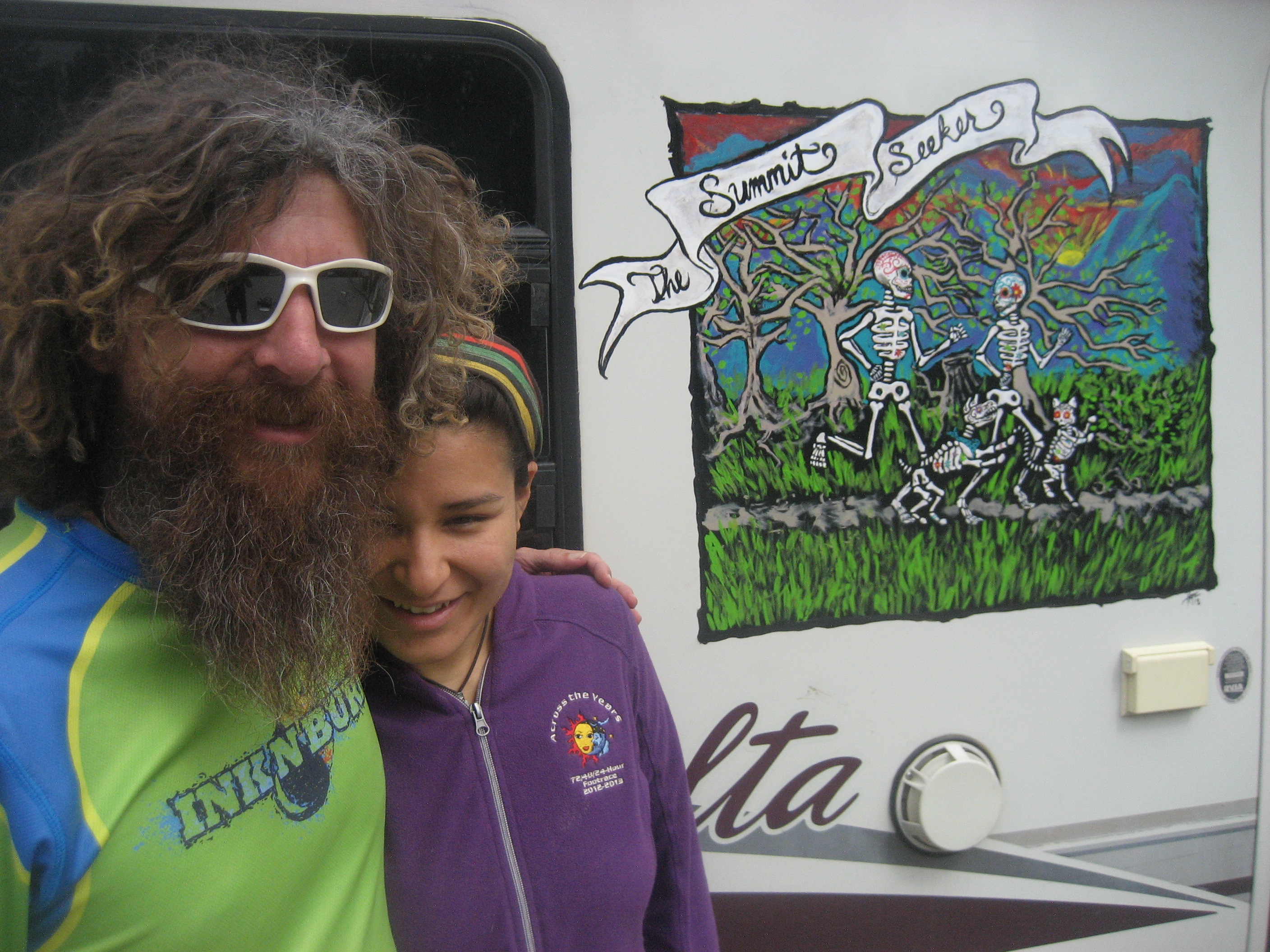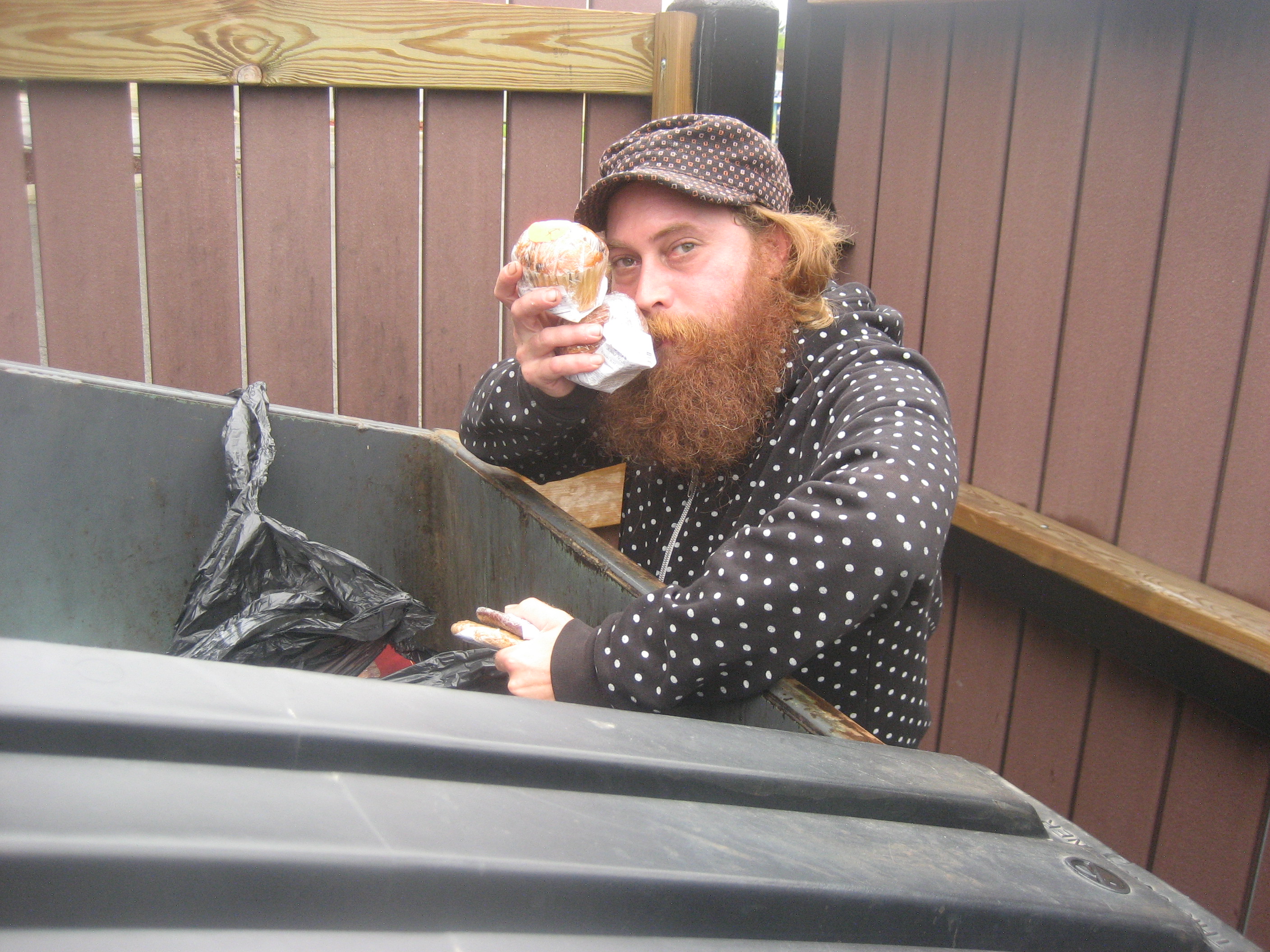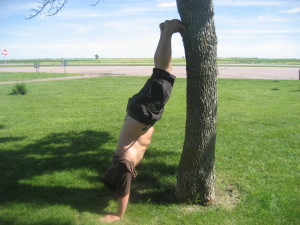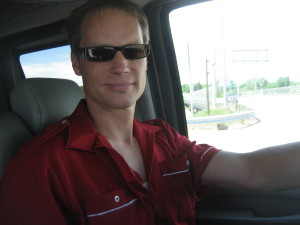
The Dumbos ready to be set up in front of the Fountain of Time, and Father Time, at the head of Midway Plaisance. Modern Midways played the site of the first ‘midway’ last month. The birthplace of the American traveling carnival was still alive, as kids played in the reflecting pool after going on rides.
———————————————————————————
Writer’s note: This is my sixth month of my coast-to-coast, year-long journey working in traveling carnivals and living on carny wages. I’ve now worked in five carnivals and hitchhiked 8,000 miles between jumps.
“Work is about a search for daily meaning as well as daily bread, for recognition as well as cash, for astonishment rather than torpor; in short, for a sort of life rather than a Monday through Friday sort of dying.” ― Studs Terkel
Boogie runs a spinning Century, near the first Ferris Wheel at the birthplace of American traveling carnivals.
Standing high on the launching ramp, neighborhood crowds lining up below, he’s proud to be part of it all – Chicago, history and living in these days.
Boogie runs the Century Wheel, a premium Ferris wheel in use in the bigger traveling carnivals. A Black man in his 30s and strong-looking, Boogie wore a flashy, baggy jacket and he had a way of attracting other carnies to the wheel to talk to him. Something about Boogie, people like talking with him.
During a rain break I got a chance to talk to Boogie.
I mentioned that I was woken by a cow face looking at me that morning as The 30, the carny quarters in Chicago Heights. The owners keep 40 Black Angus cows on the same lot as the carny quarters.
He laughed but he wanted me to know that cows are part of Chicago’s history.
“Remember, a cow is responsible for all the good shit we have around over there,” he said pointing to downtown Chicago, the side tourists and photographers focus on.
He was referring to the legend of “Mrs. O’Leary’s Cow,” which was blamed for knocking over a lamp and starting the 1871 Great Chicago Fire. After the fire, Chicago rebuilt and has been reinventing itself ever since.
Boogie was hazy on the details but he knew about the Union Stockyards, which operated near our site.
He also knew the first Ferris Wheel, a elephantine version of his wheel, operated just a few blocks away, “a long time ago.”
However, I was up on my Chicago history because I’d recently been rereading “Devil in the White City,” which featured the 1893 World’s Columbian Exposition.
I also spent years as a journalist in the area and drank in the Chicago history and lore.
Where Boogie was hazy, I stepped in with the background. After that night, he consistently would ask, “Why you know so much about Chicago?”
I was glad he knew what he knew, it meant some inner city kids in Chicago still grow up knowing something about its past and see how it still spins through their lives.
EyesLikeCarnivals traditions
The 1893 World’s Fair is called “the fair that changed America” by some and it still lives in names and traditions in Chicago.
The concept of a midway with games and shows down a main street of entertainment was a centerpiece of the fair.
These days, Chicago has Midway Airport, Midway Airlines and the Monsters of the Midway, the Chicago Bears. Restaurants, bars and even churches have Midway in their names.
The quintessential Chicago traveling carnival I was working for is named “Modern Midways.”
Galesburg, Il.-born George Washington Gale Ferris built the Chicago wheel with 36 cars, holding a capacity of more than 2,000 people. It took 20 minutes to turn twice. Some cars had waiters.
The World’s Fair appeared for six months and drew crowds of 27.5 million at a time when the entire country had only 65 million. (btw, we now number about 312 million)The fair made such a national splash that waves of smaller traveling carnivals followed with rides, games, freak shows, burlesque, carousels and Ferris wheels.
They spread out from Illinois and, as one carnival manager recently told me, Illinois is still “a busy state for carnivals.”
Traveling shows or circuses, even smaller versions of the Ferris wheel have existed for centuries but the North American carnival traces back to that Chicago World’s Fair, with its Ferris wheel and midway.
The second spot of the summer for Modern Midways, was along Midway Plaisance, the exact mile-long site of the original midway.
At that Washington Park jump, we put up a Big Eli, made by Eli Bridge Co. of Jacksonville, Il., which traces its roots back a century. Boogie ran both rides, the Century at the first jump in Gage Park, the Big Eli along Midway Plaisance.
We were also just blocks away from the union stockyards, at one time the largest meat producing square mile in the world. Meatpacking names from that era like Swift and Amour still thrive.
It’s squalid conditions became the subject of Upton Sinclair’s “The Jungle.” Also a journalist, Sinclair worked in the stockyards before writing the book, as I’m working in traveling carnivals hoping to write a book.
Another writer Bertoldt Brecht wrote a play about downtrodden labor in “Saint Joan of the Stockyards.”
Brecht was a favorite of Chicago author Studs Terkel, who I interviewed a few times. Terkel quoted a Brecht poem in his autobiography “Touch and Go.”
“Caesar beat the Gauls. Was there not even a cook in his army?”
“Phillip of Spain wept as his fleet was sunk and destroyed. Were there no other tears?”
Studs wrote “Working” about the people not included in history’s narrative. I also wrote a five-section special edition of the Elgin Courier-News in the 1980s called “Working,” citing Terkel. It included nearly 100 profiles of Fox Valley area people from a struggling car washer to rags-to-riches entrepreneurs.
Studs called the newsroom to compliment me. I was out at the time but the compliment made it to the whole office as our loud secretary yelled his words across the newsroom to me later.
“Studs Terkel called and said he loved your series, whatever the name of it was,” she yelled.
I chose carnivals to write about because they operate in town centers across the country. The focus of the community often is an annual event and each has workers with lives as colorful as the carnivals they work.
Along the way, so many people I meet can relate how they once worked with a carnival, loved carnivals, or always wondered what kind of life carnies live.
“EyeLikeCarnivals” isn’t “The Jungle” or “Working” or “Saint Joan of the Stockyards,” yet it is in that tradition of living, working and writing about the lives inside history’s big narrative outline.
People like Boogie who shifts the Ferris wheel lever back and forth, watching today’s crowds thrill on the ‘modern’ midway.
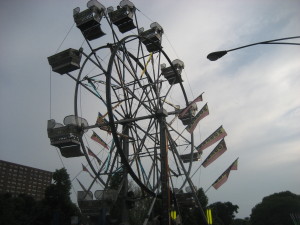
The Big Eli made in Jacksonville, Il. on the first midway along Midway Plaisance, with the University of Chicago Hospital in the background.


